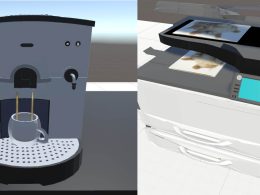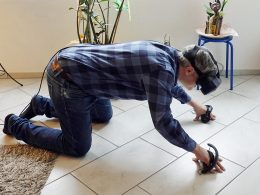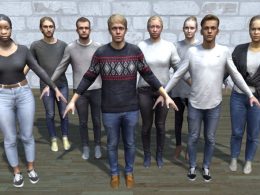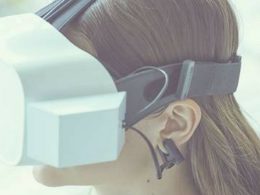Researchers are testing whether artificially recorded images of nature can also support the healing process in patients. They started with the Krimml Waterfalls.
There is evidence of the healing effect of contemplating nature in the recovery from illness. For example, a study published in 1984 by architecture professor Roger Ulrich is now considered classic. He found that hospital stays of patients who could see green trees through their windows were significantly shorter than those of patients who looked at a brick wall. Salzburg scientists now want to find out whether artificial, computer-generated nature also has such an effect.
To do this, they use VR methods to place patients in artificially created environments and measure their bodily functions. By comparing these measurements with those of patients in the real world, it can then be determined whether reality is "superior" to the artificial world.
Virtual waterfalls
Paracelsus Medical University (PMU) Salzburg has found a partner for this project in the Salzburg University of Applied Sciences. The laboratory will test products and services that utilise VR technologies in the treatment of diseases. The first project of the two co-operation partners was an examination of patients with chronic obstructive pulmonary disease (COPD) in a virtual version of the Krimml Waterfalls. To create the virtual model, the researchers travelled to the real waterfalls in the Hohe Tauern National Park.
There, they used drones to take numerous photos of the landscape at different heights. They also recorded the soundscape on site using a 360-degree microphone. The multimedia experts at Salzburg University of Applied Sciences then used the data to create a two-dimensional panoramic image of the area and a 3D reconstruction. They achieved the depth effect using photogrammetric software.
In the clinical part of the study, 60 test subjects were then asked to put on VR goggles and spend some time in the virtual world. The parallel medical measurements focussed on heart and lung function. We know that spending time at the real waterfalls induces a state of relaxation. The heartbeat normalises, breathing deepens, oxygen saturation in the blood increases and the breathing rate slows down and synchronises with the heartbeat. In addition, inflammatory respiratory gases in the lungs are reduced.
The clinical trial was completed at the end of 2018 and is currently being analysed. It remains to be seen whether the effects of virtual nature are really on a par with the real thing. "It's not about virtual worlds replacing the real experience of nature," emphasises Hartl. Rather, the target group of the research results are people who are unable to go out into nature themselves for medical reasons because they are bedridden. Or, as in the case of COPD patients, because the low atmospheric oxygen at the Krimml Waterfalls would be counterproductive for them.
Exercises with an avatar
"The biggest challenge in creating the model is the waterfall itself," says Markus Tatzgern. "We are currently working on improving the 3D model." Another goal of the researchers is to develop an "exergame" (a portmanteau of "exercise" and "game"). The aim is for an avatar to accompany patients in virtual reality as they carry out respiratory therapy exercises. Highly personalised and tailored to the respective type of illness, the aim is to automatically recognise how well the patient performs the exercises. Another conceivable scenario would be one based on social networking, in which several patients meet in a virtual room and perform the exercises together.
Further research questions concern the methodology itself. The aim is to find out how realistic the artificial world has to be in order to have a medical effect. Does it always have to be a 3D representation, or is a 2D panorama sufficient? And which representations have a similar effect? The sight of trees? Of water? The sounds of nature? Last but not least, the Ecomedicine Virtual Reality Physiology Lab is also intended as a place of teaching where young scientists can be trained and write their theses.
Source: derstandard









